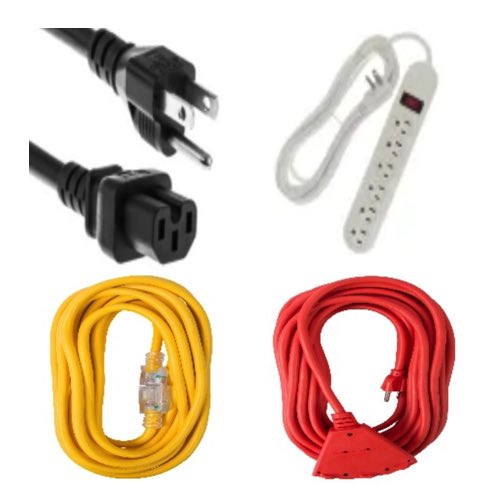AC Power Cords

RSP Supply carries a full line of AC power cords and power strips designed to connect electrical devices safely and efficiently. Available in multiple lengths, plug types, and connector configurations, these cords provide reliable power delivery for equipment in residential, commercial, and industrial environments. AC power cords function as the essential link between a power outlet and a device, ensuring consistent electrical flow. The cords feature a plug on one end and a receptacle or device connector on the other, allowing compatibility with a wide range of equipment. Whether you need a short cord for nearby connections or an extended cable for hard-to-reach installations, RSP Supply provides options that meet every application.
Selecting the correct power cord is critical to maintaining safe and efficient operation. Using the wrong cord can result in poor power transfer, equipment malfunction, or even electrical hazards. To prevent such issues, it’s best to match the cord type, gauge, and plug configuration to the device’s power requirements and environment. Keeping a few extra cords available on-site can also minimize downtime in the event of a failure or installation change.
FAQs
Q: What are AC power cords used for?
AC power cords are used to connect electrical devices to power sources, ensuring safe and reliable delivery of alternating current for operation.
Q: What lengths of AC power cords are available?
RSP Supply offers power cords in a wide range of lengths—from short cables for compact setups to long cords for extended reach or complex installations.
Q: Can I use any power cord for my device?
No. It’s important to use a power cord with the correct voltage rating, plug type, and connector style to match the device’s power requirements.
Q: What are the different plug and connector types available?
Common options include NEMA 5-15, IEC C13/C14, and C19/C20 configurations, along with region-specific variants for international use.
Q: Are AC power cords interchangeable between devices?
Some are, depending on voltage, amperage, and connector compatibility. Always check device and cord specifications before swapping cables.
Why Buy AC Power Cords from RSP Supply
RSP Supply provides high-quality AC power cords and power strips designed for safe, reliable operation. With multiple connector options, heavy-duty materials, and fast shipping, we deliver the right power solutions for industrial, commercial, and residential applications.

